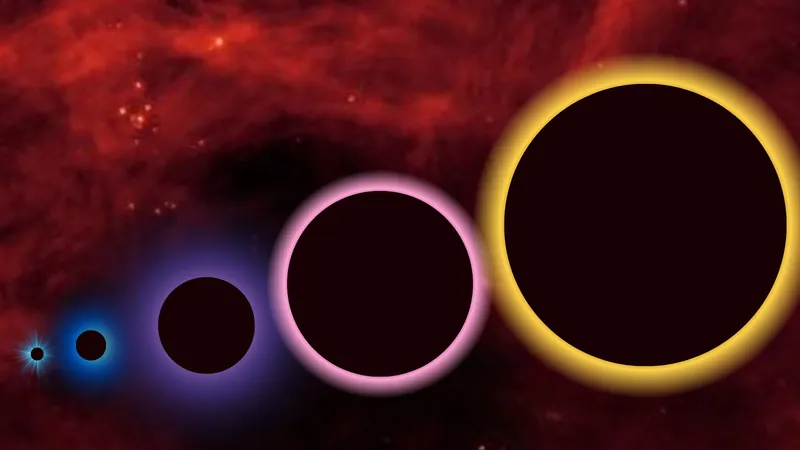
Tiny Primordial Black Holes: The Secret to Unraveling Supermassive Mysteries?
2025-06-17
Author: Wei
Could Tiny Black Holes Hold the Key to Understanding the Universe?
In a groundbreaking revelation, scientists have uncovered that primordial black holes—those formed in the universe's infancy—may have inflated rapidly into supermassive behemoths. This revelation sheds light on a major enigma in modern cosmology: how supermassive black holes could accumulate masses millions or even billions of times greater than our sun by the time the universe was merely 1 billion years old.
The JWST’s Stunning Discoveries
The quandary has intensified, thanks to the powerful James Webb Space Telescope (JWST), which has been uncovering supermassive black holes dating back as early as 700 million years post-Big Bang. One astonishing find, CEERS 1019, existed just 570 million years after the universe's birth, boasting a mass nine million times that of our sun—far too colossal to align with existing theories.
What’s Causing the Confusion?
Researcher John Regan from Maynooth University explained that as telescopes grow more capable of peering deep into the early cosmos, the persistent presence of supermassive black holes raises questions. These black holes seem to appear almost out of nowhere in the universe's early timeline, challenging long-held beliefs about their formation.
Can Primordial Black Holes Bridge the Gap?
The new research suggests that primordial black holes might have provided supermassive black holes with a significant head start in their growth. Unlike conventional stellar-mass black holes, which form from the collapse of massive stars, primordial black holes are theorized to have originated from dense regions of matter in the first moments after the Big Bang.
A New Perspective on Black Hole Formation
Primordial black holes can range dramatically in mass—potentially from minuscule sizes to hundreds of thousands of times that of the sun—offering them an advantage in evolving rapidly into supermassive black holes. Regan notes that while normal black holes can only form post-stellar death, primordial black holes could begin to grow almost immediately.
The Role of Matter in Black Hole Evolution
The research illustrates that primordial black holes can effectively accumulate matter, mainly hydrogen and helium, crucial for their growth. For this process to be successful, these primordial giants would need to drift toward the centers of galaxies, where matter is abundant, and supermassive black holes are ultimately found.
The Search for Evidence
While this research provides a tantalizing glimpse into the origins of supermassive black holes, it hinges on simulations and remains to be confirmed through observation. Evidence might come in the form of detecting low-mass black holes today, which could signal growth from primordial origins, or the discovery of a massive black hole in the early universe, predating 500 million years after the Big Bang.
The Quest Continues!
Regan expressed excitement about the rapid growth of primordial black holes proposed in their simulations but acknowledged the need for further research. The next steps include refining their simulations to incorporate both primordial and astrophysical black holes, aiming to uncover distinguishing features. "If primordial black holes do exist, they might just be hiding at the fringes of our universe's most extreme environments!" Regan concluded, igniting hope for future cosmic discoveries.


 Brasil (PT)
Brasil (PT)
 Canada (EN)
Canada (EN)
 Chile (ES)
Chile (ES)
 Česko (CS)
Česko (CS)
 대한민국 (KO)
대한민국 (KO)
 España (ES)
España (ES)
 France (FR)
France (FR)
 Hong Kong (EN)
Hong Kong (EN)
 Italia (IT)
Italia (IT)
 日本 (JA)
日本 (JA)
 Magyarország (HU)
Magyarország (HU)
 Norge (NO)
Norge (NO)
 Polska (PL)
Polska (PL)
 Schweiz (DE)
Schweiz (DE)
 Singapore (EN)
Singapore (EN)
 Sverige (SV)
Sverige (SV)
 Suomi (FI)
Suomi (FI)
 Türkiye (TR)
Türkiye (TR)
 الإمارات العربية المتحدة (AR)
الإمارات العربية المتحدة (AR)